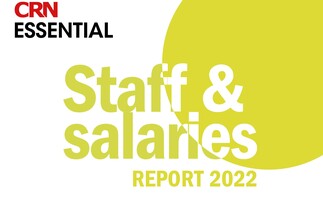Any IT professional charged with solving the branch IT challenge for their organisation is familiar with the pressures that come with the job. Technological advances combined with the need to deliver new business models, new ways of engaging with customers, and uniform operating models are leading to demands for advanced, coordinated IT capability across all sites, no matter how remote or how small.
But effectively delivering and managing state-of-the-art, complex, and usually dynamic multisite IT isn't an easy task. Proportionately, it takes up a lot of time, gives you too many headaches, and costs too much. Here are the top 5 challenges that IT professionals tell us they face in managing multisite IT.
1. Lack of local IT skills
Once a new office or store is up and running with a suitable infrastructure, network, firewalls and servers, IT professionals usually find that the increase in local IT complexity has not been matched by a growth in local IT skills, which, for smaller sites can be zero, putting more stress on central resources. The per capita cost of supporting remote branch IT is historically much higher than that associated with co-located infrastructures. This increased cost arises from the cost of the time and travel needed to get to these remote sites if on-site support is required, which is further increased if sites are distributed internationally.
2. Cloud integration
The cloud can't help in all instances for all applications and all data. Many of the new and innovative applications (as well as most legacy ones) require IT infrastructure on the remote site. Consequently, although the public cloud has a significant role to play in branch IT, it does not support some of the most demanding business requirements of the distributed organisation. This means local resources still need to be supported and integrated with the cloud - adding to the complexity.
3. Lack of consistency of implementation
When every remote site is different, complexity and costs increase. If each of your sites have diverse IT infrastructures you'll need more time and effort to monitor, maintain and patch the environments. But larger organisations need to focus more on the headquarters' IT environment, dealing with the complexities of a virtualised private cloud infrastructure of their own.
4. Increased demand for advanced local applications
IT professionals need more and more advanced application on remote sites to support new customer engagement models and new business needs. As organisations seek to interact with their customers and clients in new ways, branches are becoming an integral part of a multichannel engagement model, like retailers delivering a digital strategy that encompasses multichannel retailing, for example.
5. Lack of control
Local ‘tinkering' increases costs and risk, when maintaining security is key. In many cases, data must be stored and manipulated locally for policy, privacy or control reasons. But if untrained local staff are required to perform any IT activity, or choose to do so on their own, the opportunity for mistakes and expensive fixes increases greatly. Sometimes, it can be a struggle to keep on top of changes that might have been made locally.
So where does the IT professional start? How do you detangle the plethora of IT systems and build a new environment that offers standardised IT that is centrally managed whilst also supporting the specific requirements of each site or branch? There's a range of options out there. But two major and interconnected developments - hybrid cloud and hyper-convergence - are allowing us to redefine servers in a way that meets the needs of advanced local IT capability without the advanced local IT skills.
Hybrid cloud and hyper-convergence
Hybrid cloud allows organisations to choose what IT functionality remains on the local site and what is delivered from the cloud. With hybrid cloud, you have a server on your site, but it exists as a private cloud integrated with the public cloud and managed through the cloud. Hyper-convergence is also now migrating to the smaller site. It's an architecture that tightly integrates compute, storage, virtualisation and other IT functions into a single appliance, based on industry-standard hardware. If you need more storage or compute power, or other IT resource, you simply buy another hyper-converged server that automatically integrates with your existing resources. It's like bringing the benefits of the cloud to the premises, with flexible and expandable capability easily available without expensive and complex IT projects being required.
This approach is enabling IT professionals to meet the common objectives in most multisite organisations. It provides a consistent technology platform for all locations and businesses; a single set of data; best practice in IT and to support operational excellence by providing a standard technology stack to build a consistent set of practices in order to achieve predictable performance; resilience in order to keep operating, with scale-out architectures with automated failover in the event of hardware faults; and good functional fit out of the box, with built-in keep current technology, so that they can be kept up-to-date over many years and many complete software releases without having to send people to the site.
The fundamental shift in cost-effective, high-functionality, small-site IT delivered by cloud-managed servers is a game-changer in the world of branch IT and helps tackle the challenges of delivering multisite IT head-on. Increasingly, it looks as though this approach for delivering complex local application capability without a corresponding complex IT infrastructure will be the norm.









